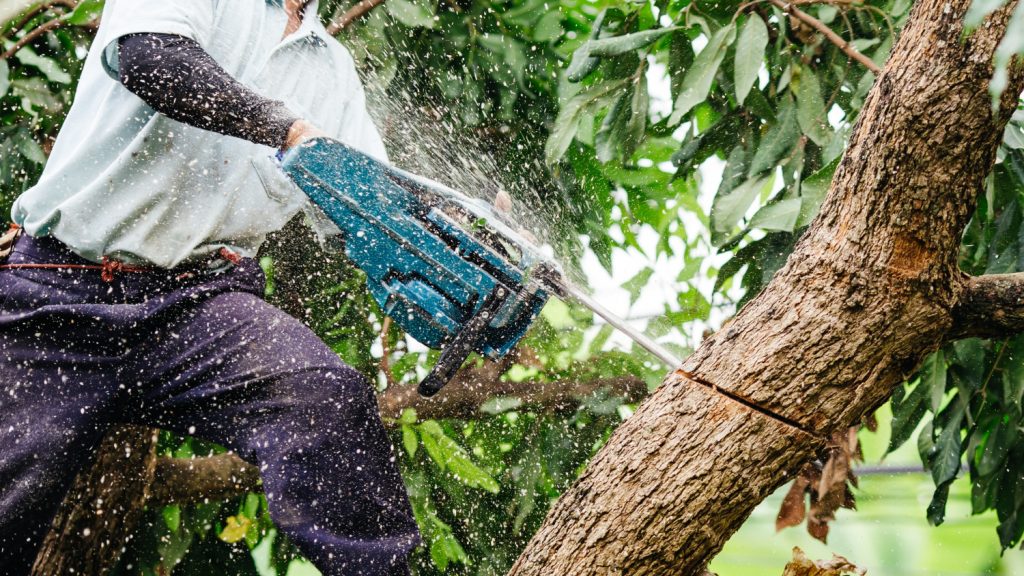Every tree begins life in the humblest way, a seed buried in soil, quietly absorbing water, nutrients and warmth to sprout its first roots and shoot. What follows is a fascinating, often decades long journey of growth, adaptation and survival. Trees whilst silent in their existence, are busy behind the scenes providing oxygen, enriching the soil, stabilising ground, offering shade and giving refuge to a variety of wildlife. Each stage of their life, whether youthful and growing or old and hollowed is a valuable chapter, although like all living things trees have a naturel lifespan and there comes a point where they can become more hazard than haven.
This is where professional tree assessment becomes essential as it’s about the not just about aesthetics or a better view, the health of the tree, the safety of its surroundings and the broader environmental impact are all just as important. Understanding this lifecycle is key to knowing when tree removal is the responsible decision.
Recognising the Stages of Tree Maturity
A tree doesn’t mature overnight, it develops through stages that can span decades or even centuries. During the sapling phase, trees are young, flexible, and rapidly growing. They’re also quite vulnerable to storms, poor soil and diseases. With good care, they grow into the mature phase, becoming larger and sturdier, developing canopies that offer ample shade and branches that support native wildlife. At this stage, they’re often at their most valuable to the ecosystem. Eventually, they enter what can be considered the “retrenchment” phase, where signs of ageing begin to show. Tree retrenchment refers to the stage when trees no longer have the health and vigor to transport sugar, nutrients and water from the soil all the way up into the trees canopy, and at this time the tree will exhibit crown dieback and it will essentially shrink its upper canopy by dropping these upper limbs.
Beyond the retrenchment phase, limbs might die back, bark can peel, and fungal growth may begin to appear. While some trees age gracefully, others may start to structurally decline or succumb to internal rot or pests. Recognising the signs of where a tree is in its lifecycle helps in determining what kind of care it needs, or whether it’s nearing the end of its life and becoming a risk.

Knowing When It’s Time to Say Goodbye
Not all trees can or should be saved, so when a tree is dying or structurally unstable it can pose a serious threat to people, homes and infrastructure. Some signs of irreversible decline include large cavities, fungal growth at the base, sudden leaf loss or visible cracks in the trunk. In many cases, the roots tell the real story and if they are damaged, whether it’s from disease, soil compaction or construction, can leave a tree weak and vulnerable to toppling, even if the canopy looks full. It’s also important to watch for trees leaning excessively, branches dropping unexpectedly or trees interfering with overhead power lines. Safety must always come first and a professional arborist can evaluate the tree’s condition and determine whether careful pruning will solve the problem or if complete removal is necessary. Their expertise ensures that removal is based on risk and science, not personal preference or aesthetic reasons.
Removing a Tree Doesn’t Mean the End of the Story
Tree removal may seem like a drastic step, but it often opens the door for renewal. When a tree is cut down responsibly, it gives the opportunity to replant something more suitable for the environment or location. It’s a chance to think about native species that support local wildlife or trees better suited to the climate and space, whilst removing a diseased or dead tree can also halt the spread of pathogens to nearby healthy trees.
And when done thoughtfully, it maintains the integrity of the landscape and keeps everyone safe. For example, in areas where trees are aging in clusters, staggered removal and replanting can ensure long term canopy cover. Ultimately, while saying goodbye to a tree is never easy, responsible management keeps the surrounding environment vibrant and balanced.
